Summer Review of Space Affairs
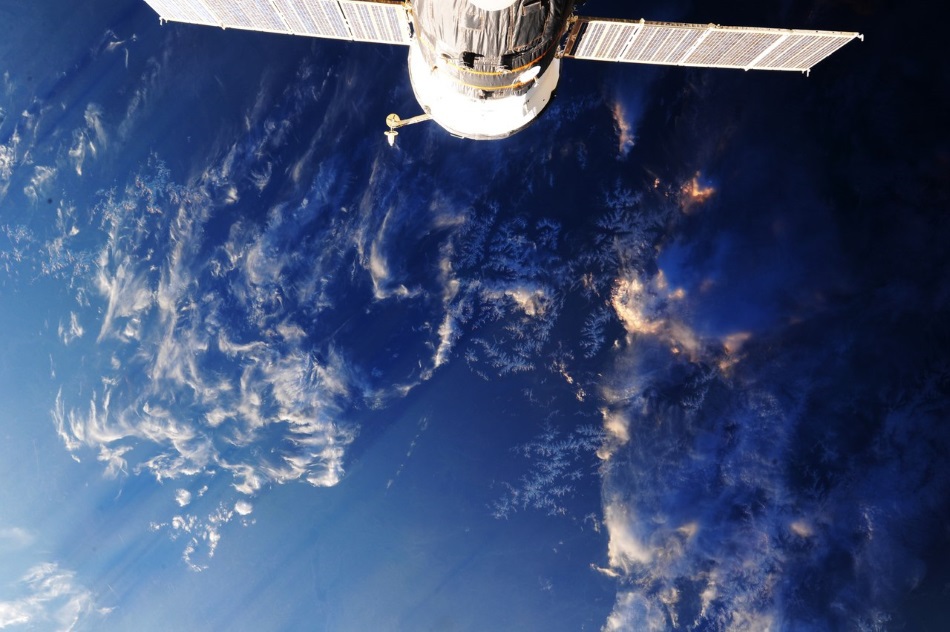
A year ago, I wrote a review post about what is happening in the world and domestic cosmonautics, and what are the achievements of different countries in this area. It so happened by chance that the next morning, “Proton” epically fell with three GLONASS satellites on the air, so that post was widely dispersed. Now, a year later, I was thinking - why not write a new review with a story about space affairs for the second half of 2013 - the first half of 2014. Such reviews are usually written on New Year's Eve, the more interesting will be the look from July.
Introduction
The post is structurally divided into the same sections as the last time — manned space exploration, applied unmanned space exploration, scientific unmanned space exploration, and launch vehicles.
Manned astronautics
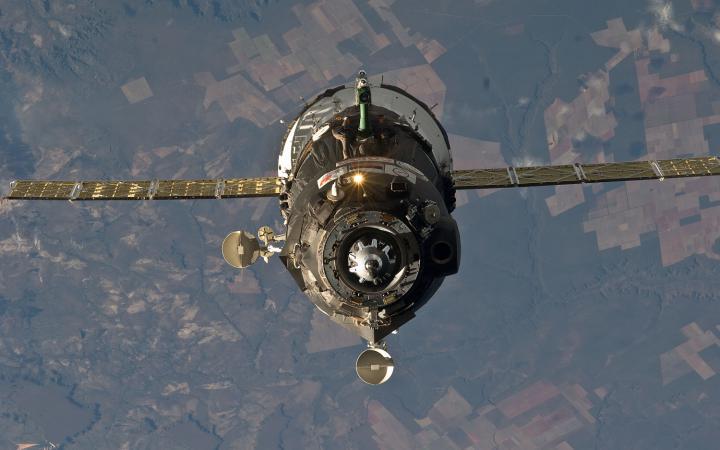
Manned ships
2014 will probably be the year in which only Russia launches manned ships. The fact is that China, which usually launched one Shenzhou each in 2012 and 2013, does not plan manned flights this year, while ships from other countries are still undergoing tests.
Russia : TMA-M Unions fly , new equipment is being tested in parallel. For example, the new Kurs-ON docking system, which will be installed on Soyuz TMA-MS, is now rolling on Progress. In parallel, a new PPTS ship is being developed , it is also the PTK NP, the first launch is expected in 2017-2018. The layout of the ship was shownat the MAX-2013. Now separate nodes are being developed and tested - portholes, a control knob, etc. If you are interested in the news of the development of this spacecraft, I recommend that you follow the topic on the Cosmonautics News forum and the blog of test cosmonaut Mark Serov, who is involved in the development.
USA : Active work is underway to develop several ships at once. Dragon Cargo Ship Development - The manned DragonRider was renamed Dragon V2 , and its layout was shown on May 29, 2014. In terms of depth, the mock-up was inferior to the PTK NP - apart from the stylish racing seats and a large dashboard with touch screens, there was nothing, and the mock-up sparkled with the bare walls of the cab. Mini Shuttle DreamChaserstarted throwing tests - the prototype was dropped from a helicopter on October 26, 2013. Unfortunately, the tests ended in an accident, the landing gear did not come out, and the prototype was damaged. The CST-100 tested the parachute system in 2012, and in August 2013 the ergonomics of the cockpit and communications were tested. The Orion spacecraft is under active development , repeated tests of the parachute system and rescue system have been carried out, and a test unmanned suborbital flight is expected in December 2014 .
Europe : In 2012, ESA decided to join the Orion program, the ACTS / CSTS project is closed.
China : Shenzhou Ship Operated, the next flight, "Shenzhou-11", is expected in 2015-2016. Uncertainty is associated with the fact that this flight is planned to be carried out to the new modular Chinese orbital station, which has not yet been launched.
India : In February 2014, it suddenly became clear that the ISRO OV project received funding and a fairly high priority. Tests of the parachute system were conducted in March , and the first unmanned suborbital test flight is expected, no less, in the second half of 2014, I recommend to follow the news.
Japan : There is no news about the development of any manned ships.
Orbital stations
The operation of the ISS is ongoing . Due to some cooling of relations between Russia and the United States, clouds began to gather over the future station - it is not known whether its operation will continue after 2020. Russia is the only country that planned to expand the ISS with new modules, and the Science modulewas supposed to fly in the spring of 2013. But the module showed technical problems during testing, and its start was postponed. The dates were originally called in 2014, but in the fall of 2013 the module was returned for revision, and can fly as much in 2016-18. Given the political problems of international cooperation and the aging of the ISS, there is some likelihood that the block will become the basis for a new Russian or Russian-Chinese orbital station - Nauka was developed on the basis of the FGB, which became the first block of the ISS.
China plans to move from a single-module Tiangong-1 station to a multi-module station in the style of the World or the ISS. Specific dates are still unknown, the launch of the first module is approximately 2015-2016.
Bigelow does not cancel its launch plansprivate orbital station , and, according to news, acquired launch services for one launch of the Falcon 9 rocket, but the payload of this launch is still unknown.
Supply Cargo Ships
Russia : Progress continues to operate , 2.3 tons of payload, 4 launches per year.
USA : Dragon - 3.3 tons into orbit, 2.5 - back, in 2013, one launch, in 2014 they want to make 4 launches, but are unlikely to have more than two in time - the launch dates gradually go “to the right”, the second launch in 2014 year should have been in June. The ship Cygnus made its first flight to the ISS in 2013, can deliver 2 tons of cargo.
Europe : ATV Program Ends, Georges Lemetre Ship Will Be the Last Ship of the Series. Launched July 26, 2014. Payload 7.6 tons. After the project is closed, the acquired technologies will work in the Orion ship service module.
Japan :HTV - 6 tons per orbit, one launch per year. In 2014, the fifth ship of the series will fly, the launch date has not yet been announced. At least three more ships of the series are expected.
Applied Unmanned Astronautics
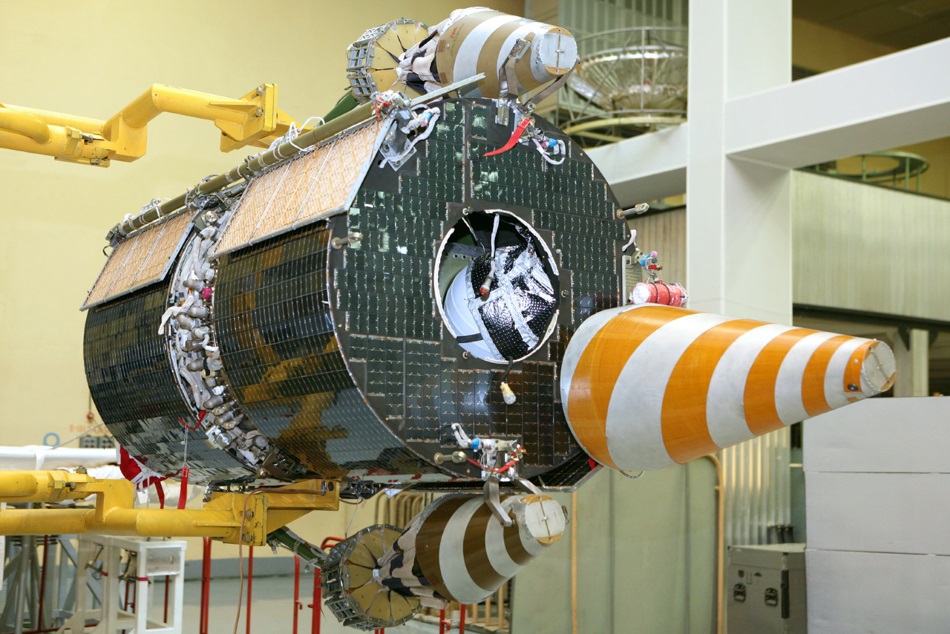
Applied unmanned spacecraft are, in fact, the bread of space. Commercial benefits from communications, meteorology, government benefits from navigation, government communications, missile warning systems - all this means that most of the launched vehicles will fall into this category.
Satellite navigation systems
Only two countries still have global navigation systems - Russia and the USA. Several countries also have or are developing regional navigation systems.
Russia : The GLONASS system is operating , 24 satellites in operation, 1 in testing (GLONASS-K on a new leaky platform), 2 in research, 2 in reserve, 1 at the stage of putting into the system, 30 satellites in total. The system was deployed stably and with a margin; last year’s loss of 3 satellites in the event of an LV accident did not affect signal availability. The last satellite was launched into orbit in June 2014.
USA : GPS system , 31 satellites in orbit, last launch in May 2014.
Europe : Galileo, in orbit 4 satellites, last launch in 2012, the system is under testing.
China : Beidou system , deployed as regional in 2012, 14 satellites in orbit. It is planned to develop into a global system by 2020.
India : The IRNSS system is actively developing , two satellites have already been launched over the past year, and two more are planned to be launched in 2014. In total, it is planned to launch seven satellites for full deployment of the system.
Japan : The QZSS system , which was scheduled to be operational in 2013, is still listed as inactive. There are three satellites in orbit, in 2013 it was announced that another satellite would be launched.
Other
Over the past year, Russia launched the following applied satellites:
| date | Title | Appointment |
|---|---|---|
| September 12, 2013 | 3 "Gonza-M" | Low orbit coherent |
| November 12, 2013 | Rainbow-1M | Geostationary military communications |
| December 25, 2013 | Cosmos-2488 / Strela-3M | Low Orbit Military Liaison |
| December 26, 2013 | "Express-AM5" | Geostationary Telecommunication |
| March 16, 2014 | 2 "Express-AT" | Geostationary Commercial Telecommunication |
| March 24, 2014 | Cosmos-2491 / GLONASS-M | Navigational |
| April 28, 2014 | Luch-5V | Geostationary liaison |
| May 6, 2014 | Cosmos-2495 / Cobalt-M | Low Orbital Species Intelligence |
| May 23, 2014 | 3 "Arrows-3M" | Low Orbit Military Liaison |
| June 14, 2014 | Cosmos-2500 / GLONASS-M | Navigational |
| July 3, 2014 | 3 "Gonza-M" | Low orbit coherent |
July 8 is expected to launch the meteorological Meteor-M No. 2, it is also worth noting the expected launch of Electro-L No. 2 at the end of the year.
Of the losses of this year’s satellites, the most notable is Electro-L No. 1, which has problems with the orientation system. Despite the dramatic story of flashing the device in orbit and returning it to operation on May 25, the problems resumed, and now the satellite is at least partially inoperative. Also in April, the Cosmos-2479 / Oko-1 missile attack warning satellite was withdrawn from combat duty, missile attack warning tasks now lie at ground stations.
Scientific unmanned space exploration
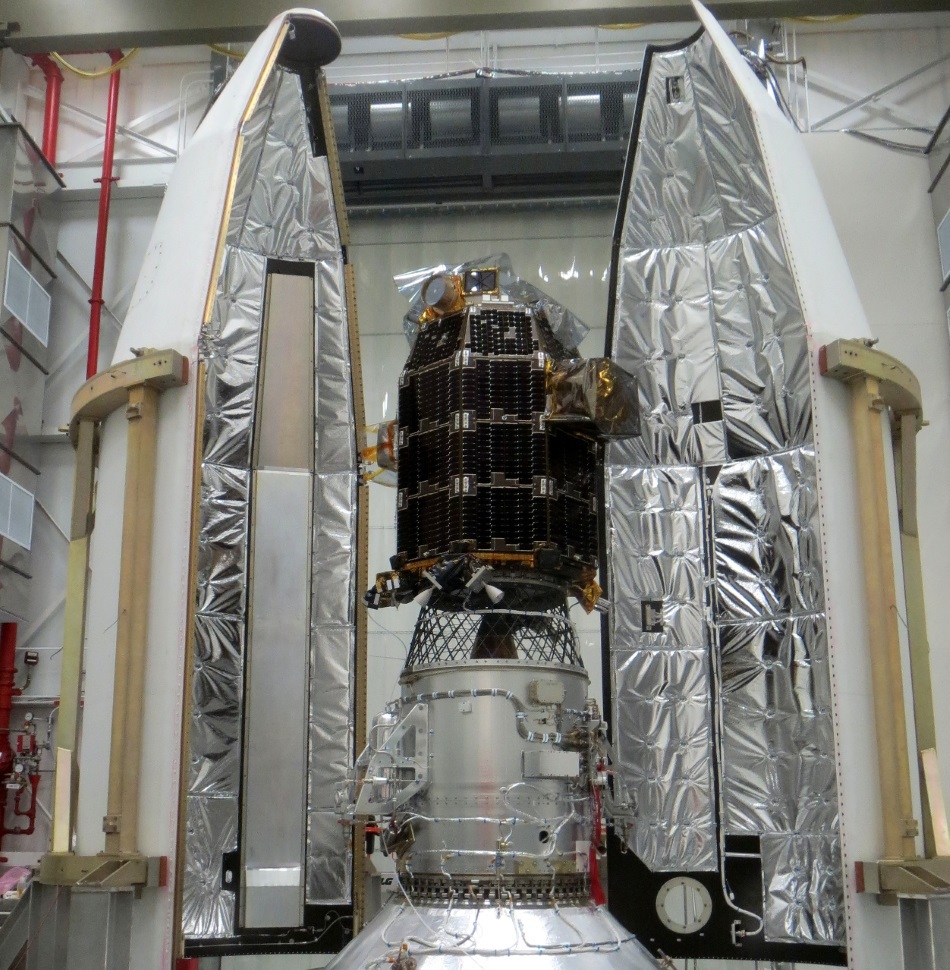
In Asia, the “lunar race" and the "Martian race" are at full strength - China landed the lunar rover on the moon, and India launched a probe to Mars.
Automatic Interplanetary Stations
Russia : There are no interplanetary missions, thanks to international cooperation, some devices are on foreign AWS. The nearest mission is Luna-25 , the launch is expected in 2016.
USA : September 7, 2013 launched a mission to study the lunar atmosphere and moon dust LADEE . In November, the MAVEN probe went to Mars to study the Martian atmosphere.
Europe : The Rosetta mission , launched in 2004 to Comet Churyumov-Gerasimenko, will reach its destination this year. Exploration of the comet and landing of the descent vehicle are expected in November.
China : Chang'e 3 Missionwon the Asian “lunar race” stage, landing for the first time after the USSR and the USA on the Moon and landing a lunar rover on the Moon for the first time after the USSR.
India : A great success for India was the launch of the first AMS to Mars - the Mangalyaan probe , despite the problems with the upper stage and dramatic multi-pulse acceleration, went to Mars. The approach to Mars is expected on September 24.
Japan : No AMS for this year, the closest mission is Hayabusa-2 to the asteroid (162173) 1999 JU 3 , launch is expected at the end of 2014.
Scientific apparatus
Russia : The Spectrum-R radio telescope continues to operate , lightning in the atmosphere is examined by Chibis-M , micrometeorites and space debris are investigated by two AISTs . Last year, the Bion-M No. 1 biosatellite successfully flew , the Photon-M4 physical and biological satellite is being prepared — the launch is scheduled for July 18.
USA : On July 2, the OCO-2 satellite was launched to study carbon dioxide in the atmosphere. On June 27, 2013, the IRIS solar observatory started. There were also launches of micro- and nanosatellites - technological, simple scientific, student ones. Of the expected launches - climatological DISCOVR .
Europe: The most notable event is the Gaia telescope , which should map the positions and movements of stars in our Galaxy, as well as search for exoplanets, asteroids and comets.
China : No prominent scientific apparatus for the year.
India : There are no noticeable scientific devices for the year, in 2015 the launch of the astronomical satellite Astrosat is expected .
Japan : September 14, 2013 Hisaki ultraviolet telescope launched .
Withdrawal Means
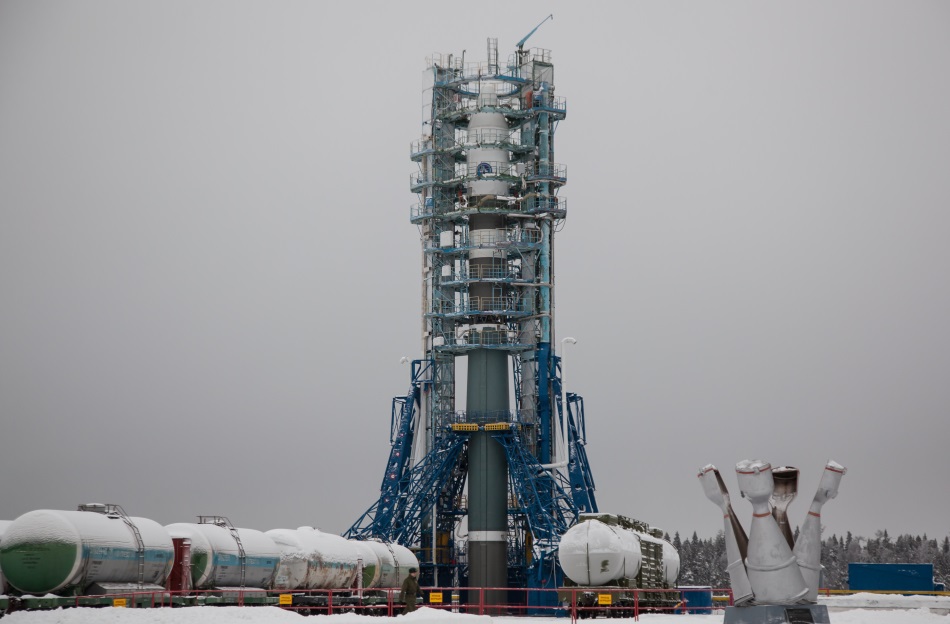
Russia is still “ahead of the rest” in the number of launches. In 2013, Russia has 32 launches, the second place is the United States with 19 launches, the third is China from 15.
Russia : A gradual renewal of the missile fleet is taking place - in the light missile segment, the conversion Dnepr and Rokot , which we got from USSR, they are replaced by a light modification of the "Union" - "Soyuz-2.1v" and a light "Angara-1.2"(launch postponed to July 9). In the segment of heavy missiles, the appearance of the heavy Angara-A5 is expected - the first launch is expected at the end of 2014. In the segment of medium-sized missiles, Soyuz-2.1b should go from experimental to commercial operation, so far only state satellites have launched on this rocket - they have been producing statistics.
USA : The first launch was made by an improved version of the Falcon-9 rocket - Falcon-9 v 1.1 . The first flight was also made by the heaviest modification of the Minotaur light rocket - Minotaur V. Dependence on Russian engines in conditions of cooling relations was superimposed on the economic rivalry of ULA and SpaceX, giving rise to a series of high-profile statements, scandals and lawsuits - the ULA was sued, it was either forbidden to buy Russian engines, it was again allowed.
Europe : The development of a new Ariane-6 rocket is underway ; the first launch is not soon - in 2020-2021.
China : Kuaizhou solid-fuel booster rocket made its first flight .
India : The development of the GSLV Mk III heavy rocket is underway , the first test launch is scheduled for August 2014.
Japan : The first flight of the Epsilon class light carrier rocket .
Conclusion
In my post last year, in my estimation, Russia was in the top three leading space powers. Since then, little has changed; we still occupy good positions in this high-tech industry. If we talk about where we are lagging behind, I would highlight our problems with the elemental base, the period of active existence of satellites and reliability issues. Last year’s accident occurred for a tragicomic reason (a collector’s error not caught by quality control), since then Proton managed to start flying again and fell again, for another reason. If we talk about the areas where we are ahead - this is, of course, the mass production of excellent launch vehicles, the development of manned space exploration and great achievements in the medical support of long flights, active forward movement, for example, the development of fundamentally new orbital tugs withnuclear power plant .
